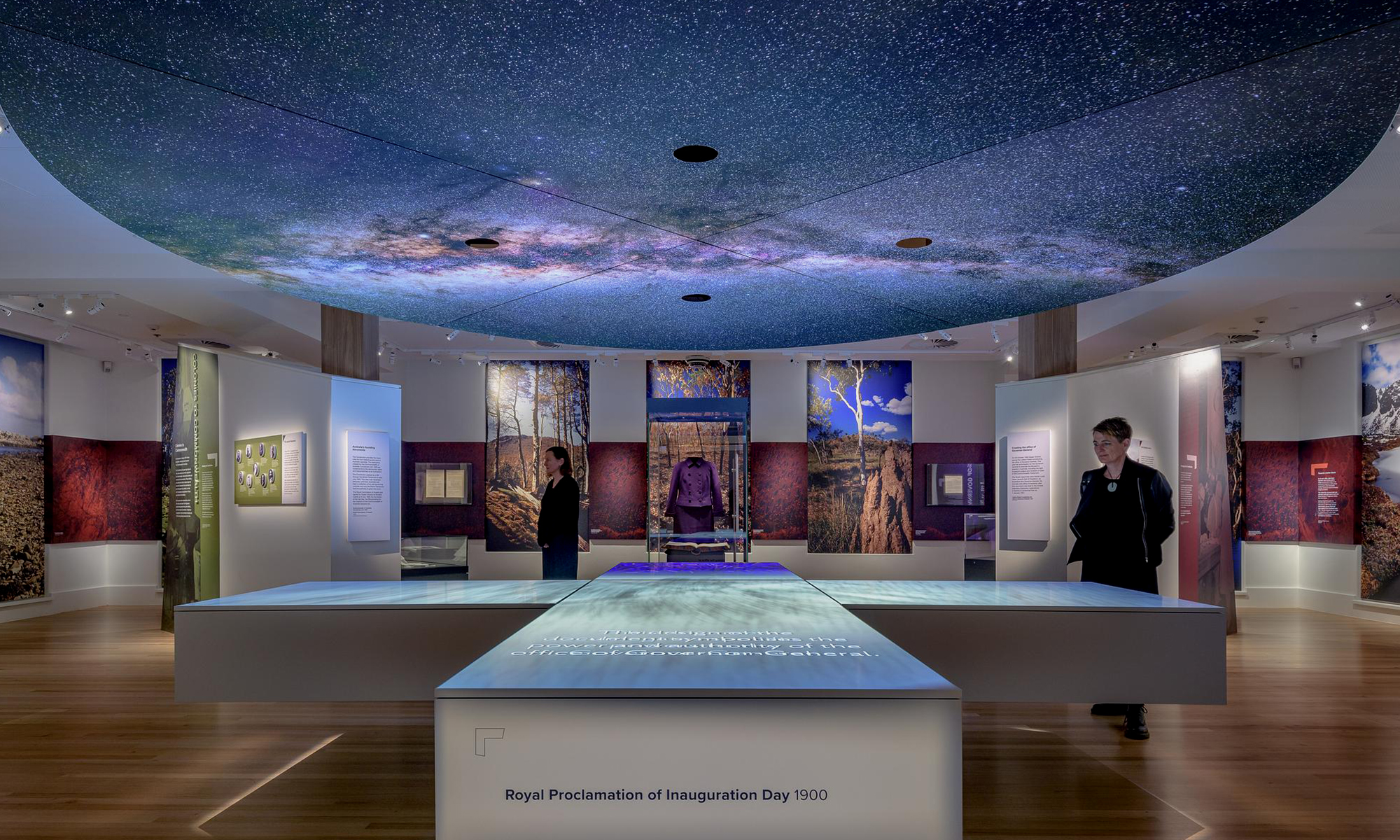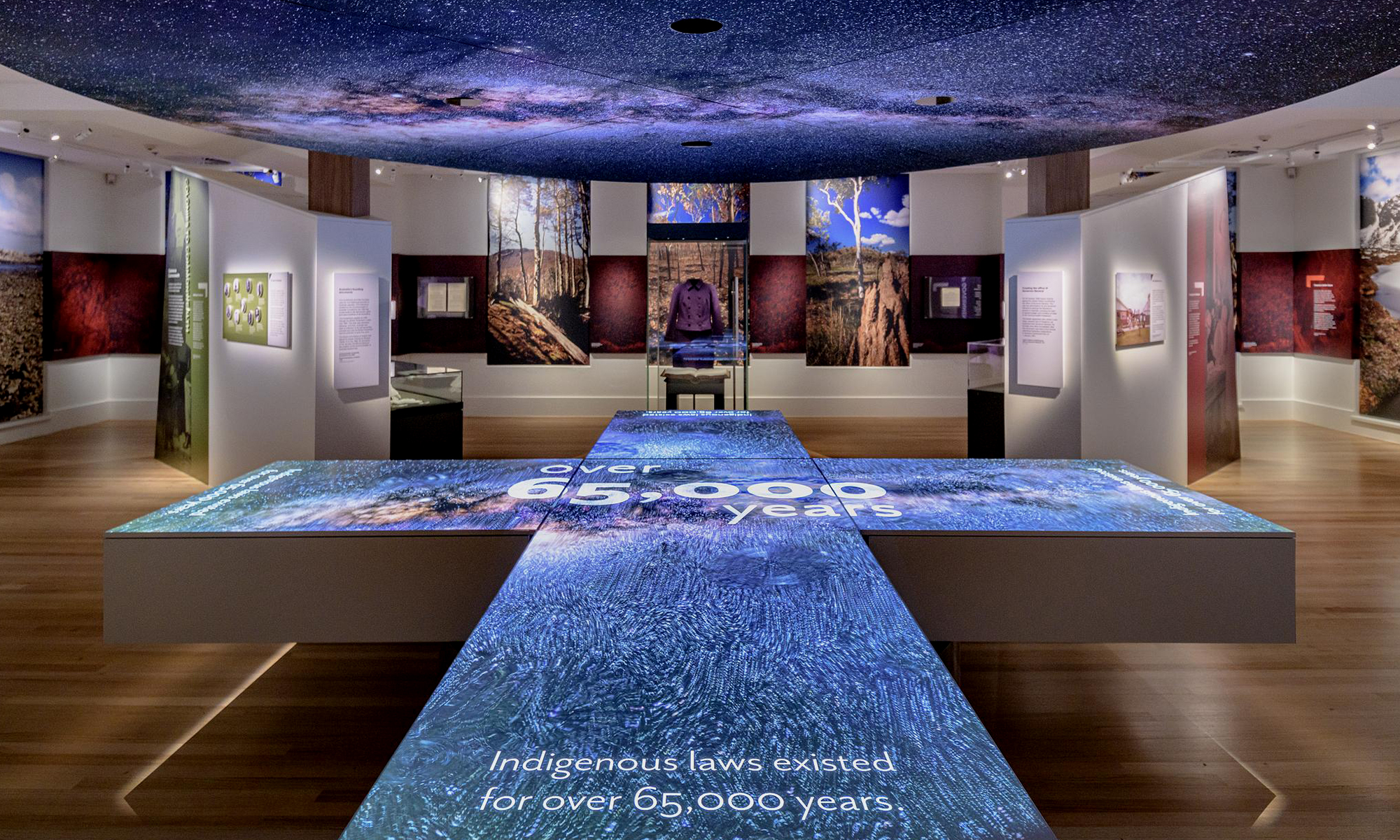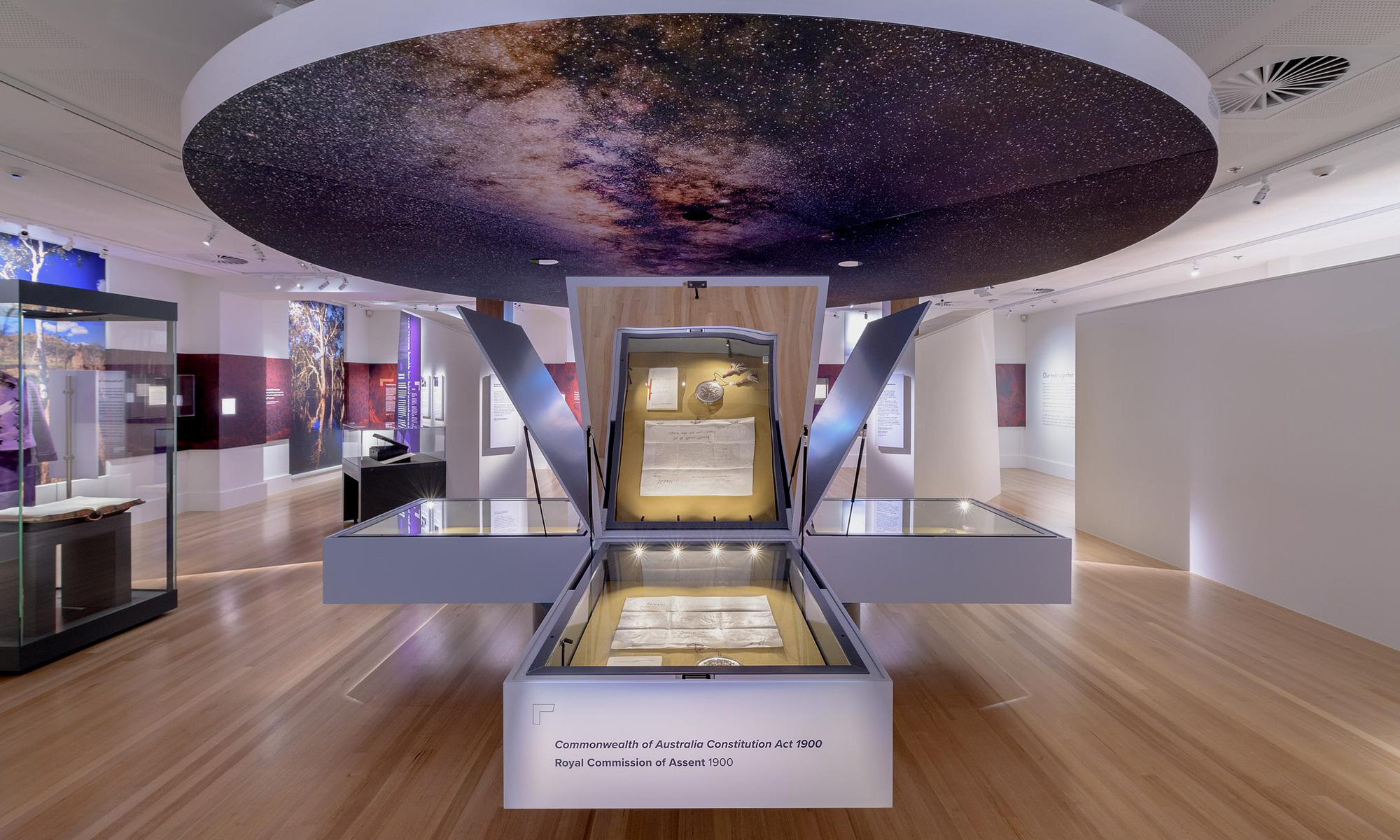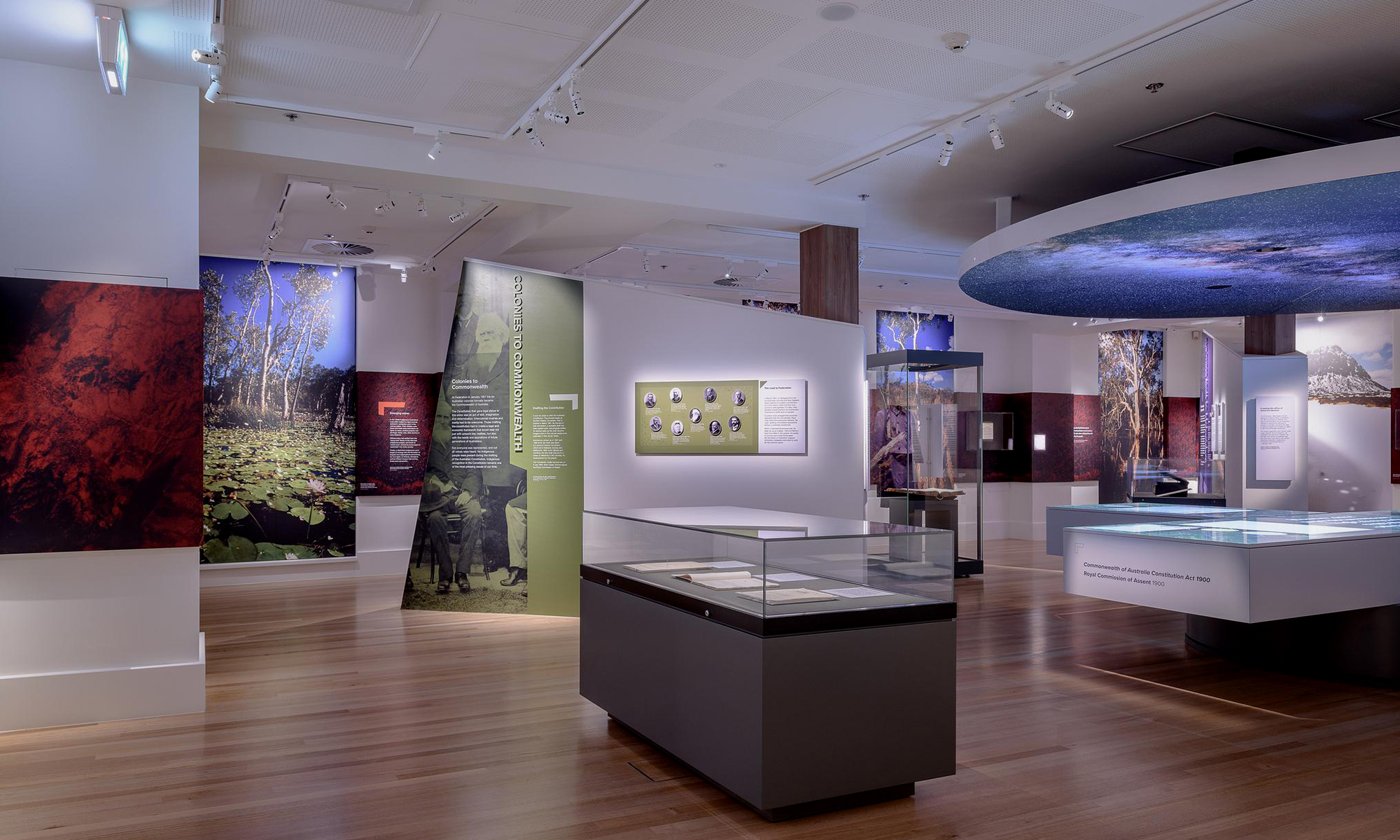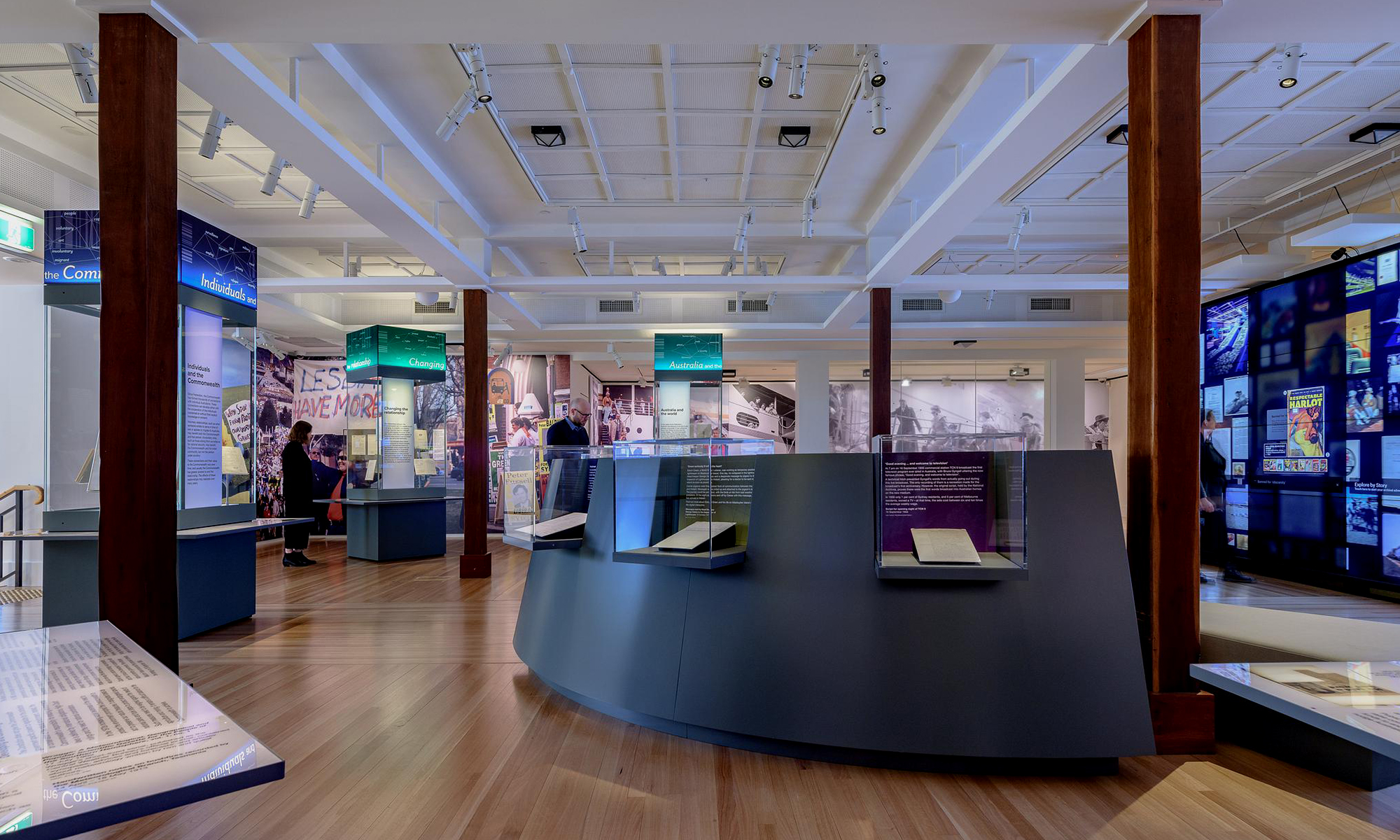National Archives of Australia
REDEVELOPMENT OF PERMANENT GALLERIES
Project Commenced: September 2018
Project Completed: Connections completed December 2019 and Voices April 2020
Floor Area: Connections Gallery 327sqm and Voices Gallery 185 sqm
Thylacine’s role
- project management
- interpretive design
- graphic design
- media design
- lighting design
- coordination with base build architects and services consultants
- fabrication & installation of all exhibition components
Award
MUSE Design Awards 2020
Gold, Exhibition Design
C2A Creative Communication Award 2020
Winner, Museum Exhibitions / Exhibition Design
We worked closely with the National Archives of Australia’s gallery redevelopment and curatorial teams to develop the exhibition from the design through to the construction stages.
Archives, whether personal or official, provide proof and validation of a relationship. Identifying and documenting relationships preserves meaning within archival collections, and it was this notion of relationship that thematically underpinned both galleries. Relationships shifts the narrative lens from an authoritative Commonwealth history, to a more collaborative approach. Further, the concept functions to recognise the ancient connections of Aboriginal and Torres Strait Islander peoples to country, and provides meaningful engagement with language, culture and the fight for social justice.
The geometric and highly ordered heritage spaces of the Archives building influenced the design of both galleries, shaping the layout of the contemporary gallery fit-out.
CONNECTIONS GALLERY:
The Connections Gallery seamlessly blends digital and collection items to create a memorable experience, facilitating meaningful engagement with the extensive collection of the National Archives. The stories told here range from the deeply personal and individual, to sweeping national narratives.
The Connections Gallery is housed in previously utilised exhibition space. Several heritage features such as a symmetrical column grid and panelled ceiling, plus a more recently added overhead lighting and cable tray system, create a strong sense of geometry. Our approach was to work with this grid geometry, using it to define distinct zones to hold the six identified themes of the gallery.
Curved elements, such as the interactive wall and semi-circular central focus zone, intersect with the grid to soften the rectilinear forms of the gallery space.
The interactive wall allows visitors to explore Archives content on an 8 meter wide x 3 meter high media wall, which scrolls through a large selection of collection images. A range of ages and proficiencies is catered to here, with digitally literate users engaging via a node based, interactive story system, while younger or less proficient viewers may prefer to directly select media items from the wall to watch. Additionally, a series of “Easter eggs” on the lower monitors trigger surprises for all ages, such as a representation of Archie, one of the official Rodent Reducer cats once employed at the Archives.
The wall operates in three different modes, supporting either 4-6 concurrent individual user sessions; a facilitated mode, where one story unpacks over the entire wall or one of the highlight videos plays on a schedule; and quiet, where the wall becomes a gently moving backdrop.
VOICES GALLERY:
The Voices Gallery enables a first-hand experience of the foundation documents that formed the Commonwealth of Australia. The Gallery explores the navigation of relationships in the lead up to Federation, and those formalised in the Constitution. These legislative instruments are central to the gallery and exploring the historical context of their creation tells the story of Federation—and the heart of Australian democracy—in a new way.
The Voices Gallery is housed in former office spaces. The heritage elements of the space include four central columns, as well as large windows. Incorporating these features, alongside the need to create a light-controlled space, presented both challenges and opportunities. A key design approach was to contrast the heritage space with a ‘light and bright’ modern design aesthetic.
While framing these historic documents in a contemporary display language serves to assert their present-day importance, balancing their conservation requirements with the need for a bright space was a key design constraint of this gallery.
To achieve this, we designed a central display area with a lowered ceiling that incorporates digital interpretation on an as-needs basis. When the display cases housing Australia’s founding documents are open, the lids are pinned to a central column. When they are closed, interactive media versions of the documents are projected onto their lids. The use of ‘digital paper’ is a key feature here, providing a tactile relationship with the material of the documents themselves.
Digital versions of the documents can be explored through turning the pages of the documents, exploring handwritten annotations on the document or zooming in to a particular area of interest.

